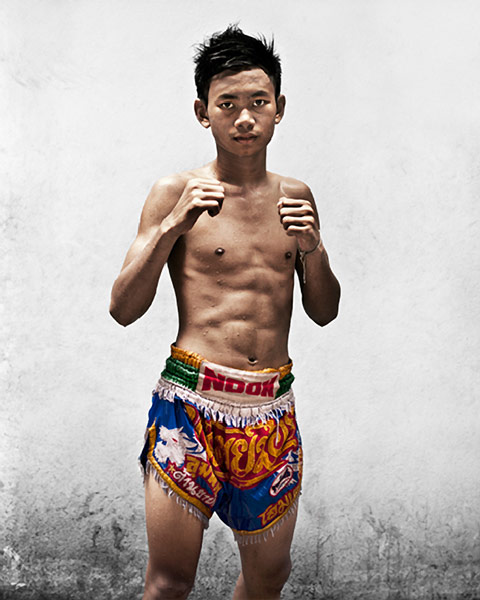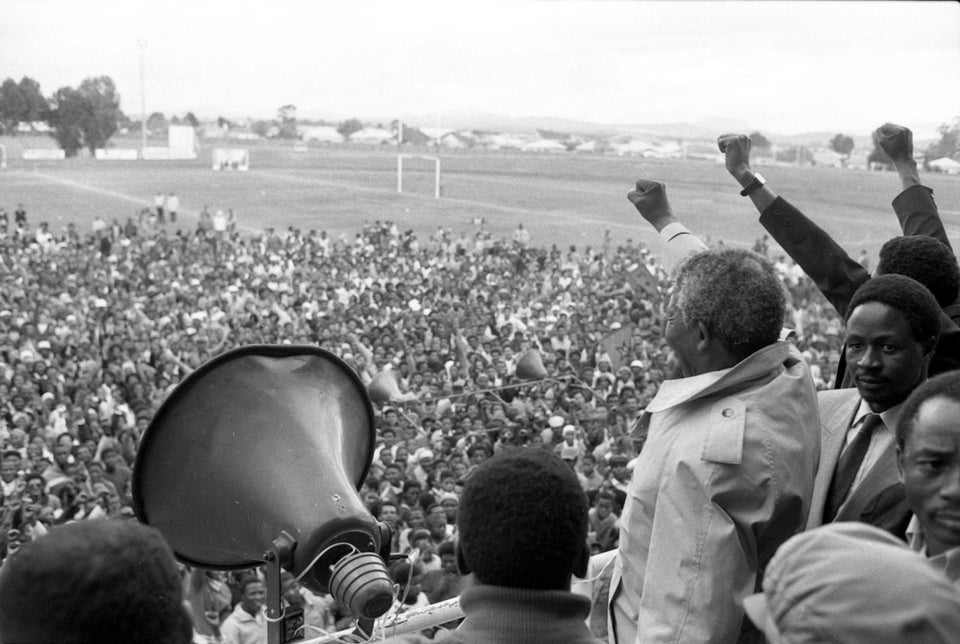There's a dark side to Muay Thai, Thailand's 700-year-old national sport. Children as young as seven or eight are often the stars of the ring, most of them poor, kicking and pummeling and injuring each other as they perform the "Art of Eight Limbs," as Muay Thai is known. The elegant name describes something brutal: the conversion of body parts into weaponry. Fists, elbows, knees, shins and feet -- all are used against one's opponents. Tiny fists, tiny elbows, tiny knees, tiny shins, and tiny feet.
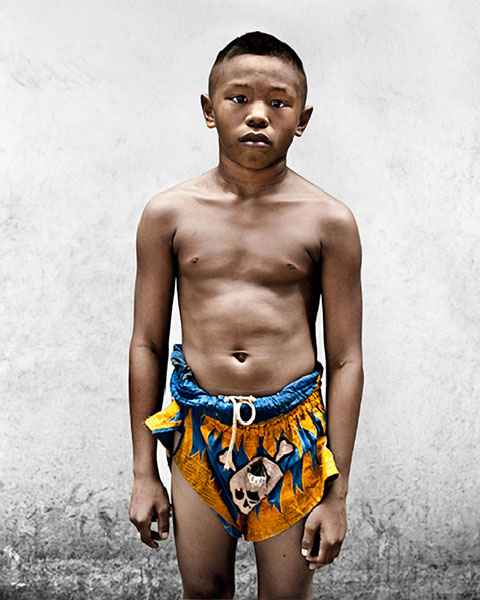
For four years, photographer Noah David Bau has visited a Muay Thai training camp in a Bangkok slum. The boys he found there are the subjects of his devastating series, "This Is My Body." The "impressionist documentary portraits" focus on the youngest of Muay Thai boxers, all of them orphaned or neglected. Writes Bau:
The boys are subjected to grueling workouts in oppressive heat; their bodies endure brutal punishment; and they are trained to be ferocious and merciless. By the time they are in their early twenties, many of them will have compromised their physical and mental well being as a result of years of excessive training and countless savage bouts. All proceeds from their winning purses are used to maintain their squalid training camp and provide for meager sustenance.
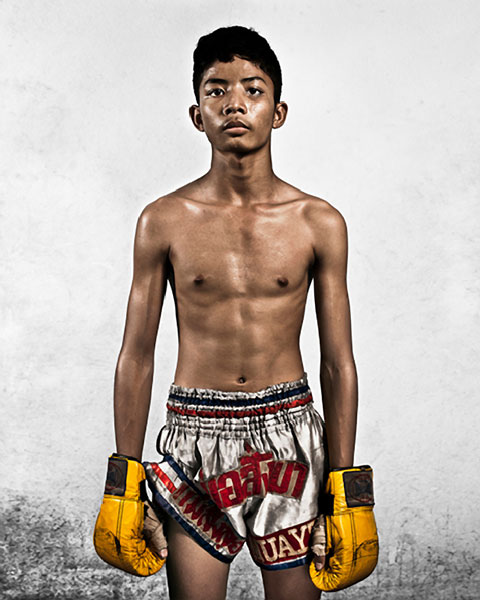
Bau wrote to HuffPost not long after we published photos from a very different Muay Thai-inspired series. For that one, Australian photographer Troy Schooneman turned his lens on young men who traveled to Thailand to train. They went of their own volition, and the portraits reflect the control they have over their lives. Draped in flowers, and gazing off into the distance, the men pose as sensitive warriors.
"While the images are beautiful and wonderfully stylized," Bau wrote in an email, "they have the effect of glamorizing an industry that is much more complex and frankly, brutal, than the viewer could ever know."
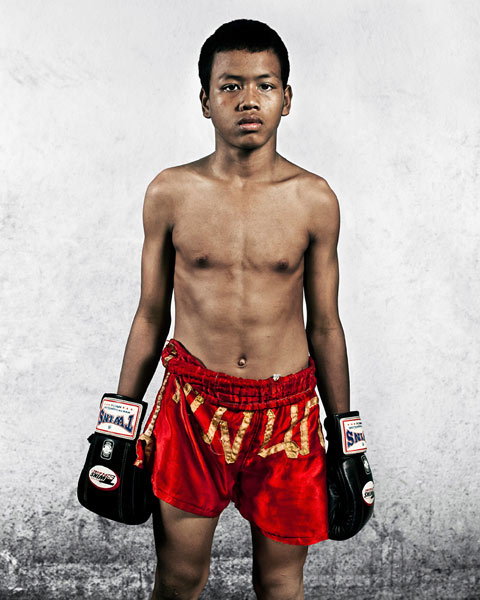
Last fall, an ESPN investigation into Muay Thai boxing conditions in Thailand quoted estimates citing some 30,000 fighters aged 15 years old. "In the rural countryside, they bang away, at temple fairs and fundraisers," reads the article "for purses of $25 to $50, and a chance for a future beyond the rice fields."
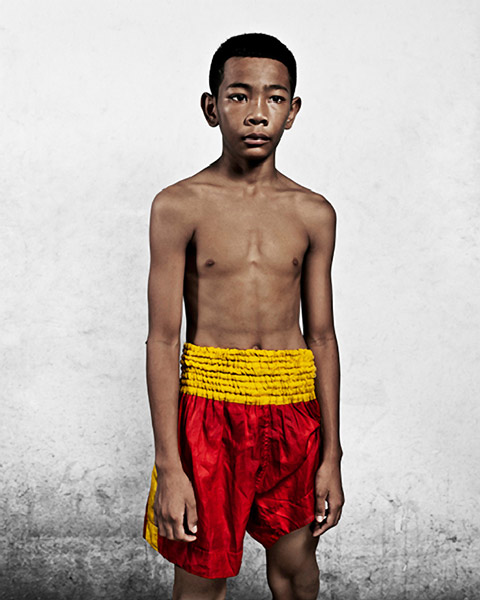
Child fighters became a phenomenon in the 1960s and 1970s, as the sport went pro. In the decades since, the Thai government has made lukewarm efforts to protect children at the behest of various activist organizations, but they inevitably meet resistance from local communities. Often, these kids are the main breadwinners for their families, who live in destitute rural areas where crime is rampant. In this context, Muay Thai is seen as a ticket out. Kids who box are admired, and keep a strict regimen that might "keep them out of trouble," as one professor put it to ESPN.
Still, the consequences can be dire. The ESPN story cites an "ongoing medical study" on the brain health of 13 fighters under the age of 16, versus the brains of 200 non-fighters of comparable ages. The mapping, conducted at Ramathibodi Hospital in Bangkok, "showed abnormalities as well as inferior memory response among the fighters."
Just as with some NFL players' brains, the damage done is traumatic, resembling "that caused by auto accidents, falls and assaults."
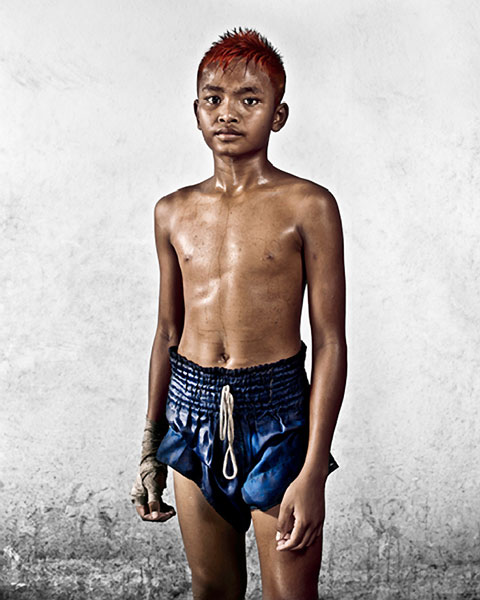
But, in the vein of football stars, the boys are also raised up as heroes. Their identities are defined by contradiction, as Bau writes, "at once admired and unwanted; savage and forlorn; innocent and jaded."
